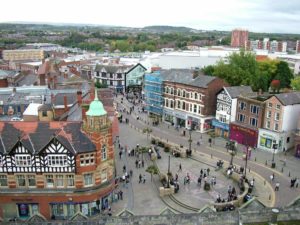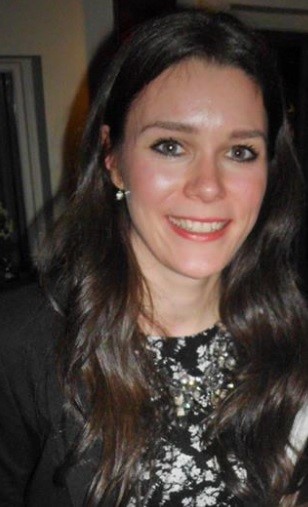
Wigan Town Centre
It is estimated that there are 40,000 people living with a diagnosis of young-onset dementia (YOD) in the UK, making up 5-6% of the total dementia population [1]. Services are often designed to meet the needs of people who are over 65 and may not be suitable for younger people. That’s why younger people have more difficulty in accessing a dementia diagnosis and the diagnostic process may take longer to complete [2]. Throughout the trajectory of the condition, people with YOD as well as their caregivers can experience a range of difficulties, ranging from early recognition and education to service availability and barriers to access [3].
Recently, we have done an evaluation of a memory service based in Wigan (North West of England), to see whether people with YOD, their caregivers, and staff felt content with the service provided. Whilst we are currently writing up those findings for publication (watch this space!), one thing that has crucially shaped the entire service evaluation process was involving the public and partners.
When speaking about public involvement in this project, I am referring to involving one person with a diagnosis of YOD, and his wife, so his main caregiver. Partner involvement refers to having involved the local council, as well as the local Alzheimer’s Society and the Lewy Body Society [4] The benefit of involving members of the public is that they can offer us insights into what they think should be investigated or improved in services. So, they can help us ensure that what we investigate as researchers actually meets the real-life needs of people living with a condition or supporting someone with a condition, in this case YOD. But partner involvement is equally important, particularly when looking at how well (or not) a clinical service is performing. I will get to the benefits of partner involvement a bit later.
Involving the public can take many forms, from providing feedback on study documents [5] to discussing methods of data collection [6]. In our project, we recruited both public advisers from the memory service. Both public advisers and partners got involved in designing the service evaluation from the start. Often, public involvement can be more of a passive activity, in which researchers only ask the public after they have made decisions. However, involving them in the decision making from the start can really help ensure that any flaws in thinking or impracticalities of an intervention for example can be more likely avoided.

There are estimated to be at least 42,000 younger people with dementia in the UK: more than 5% of all those with dementia.
So how exactly did they get involved? We’ve held regular team meetings, and both public advisers, as well as partners, were considered as equal team members to the leading clinician and academic (me) on board. What I’ve learned so far from involving the public is that often people might be uncomfortable to speak up in large meetings with professionals, so that it is really important to discuss the public’s role in the project from the start, and maybe even reiterate with them how important their thoughts are to the project. This way, we can help them become more at ease to speak up and really make their contributions count.
Besides regular team meetings, both public advisers and partners were also involved in looking at study documents, and were crucial in interpreting the findings of our study. As a next step, both public advisers will be involved, if not leading, on developing a short lay summary of the findings, which will be made available online.
An important aspect that can sometimes be forgotten in research is the step after research. Once we know what works and what doesn’t, or which barriers are in place that need to be removed, we need to implement this knowledge in real life. That is another area where involving those affected by dementia, and those providing and funding services is hugely beneficial. Without afterwards having to contact various service providers, there is already a link established with those offering services.
Thinking about involving the public in our project, I must say we have been lucky in having a person with YOD as well as his wife on board. This is not only because they have fantastic and really valuable insights from their own lived experiences, but also for more practical reasons. Involving for example a person with YOD who doesn’t have a main caregiver can sometimes be difficult. This might be because of transport problems or also because the person may forget. But what is really important in public involvement is that we enable anyone who wishes to be part of shaping research, and who has valuable experiences, to get involved. Otherwise we end up having almost biased insights. Because what about those people from less advantaged backgrounds, or those living in rural communities, who may struggle getting to meetings? To get the most realistic reflection of the experiences of people with dementia and caregivers, people from any background and walk of life need to be (supported to be) involved.
Author
Dr Clarissa Giebel [7] is a Postdoctoral Research Associate at the University of Liverpool and NIHR CLAHRC North West Coast. She has been working in dementia care research for over 7 years focusing her research on on helping people with dementia live at home independently for longer.
You can follow Clarissa on Twitter Follow @ClarissaGiebel [8]